Fisherman's Bastion in Budapest: History, Architecture, and Panoramic Views
Sitting on top of Castle Hill like something out of a fairy tale, Fisherman's Bastion is pure magic. This white neo-Romanesque beauty has seven towers that shine against Budapest's skyline. Each tower represents one of the Magyar tribes who started Hungary more than a thousand years ago. Even though it looks ancient, this place was actually built in the early 1900s. And here's the thing - it wasn't made for fighting or defense. It was built just to look amazing and give you the best views in all of Budapest.
When we first stepped onto those terraces, the whole city just spread out below us like we were looking at a giant map. The Danube River curves right through Budapest, and you can see the Hungarian Parliament's Gothic towers shooting up into the sky on the other side. This isn't just another tourist spot where you take a quick photo. This is where Budapest shows you everything it's got, where fairy tales feel real, and where every person who visits becomes part of the city's story.
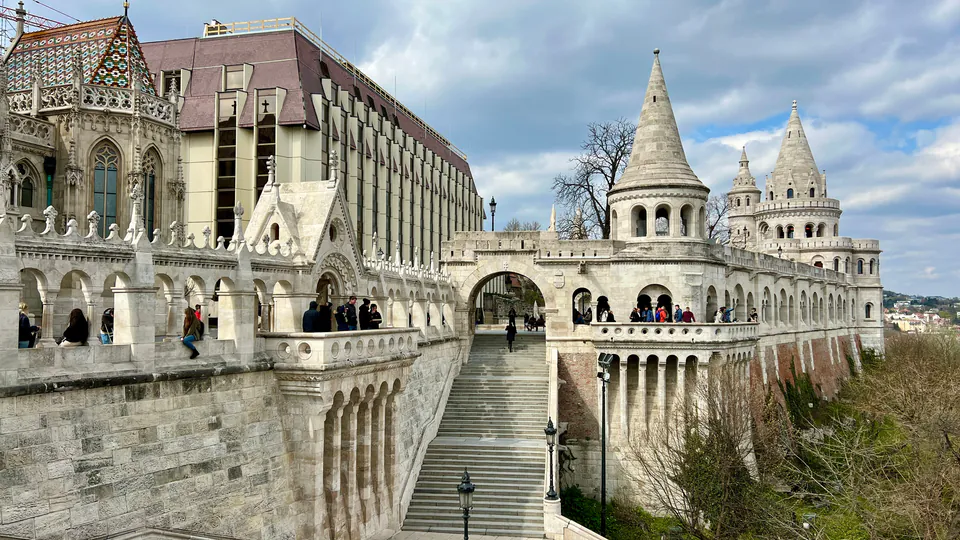
How This Monument Came to Life
Fisherman's Bastion was born during one of Hungary's most proud moments. From 1895 to 1902, while the country was getting ready to celebrate being a thousand years old, architect Frigyes Schulek had this big vision for Castle Hill. Instead of building another boring fortress, he wanted to create this romantic viewing spot that would capture what medieval Hungary felt like while giving the modern city something beautiful and inspiring.
The name comes from the medieval fishermen's guild who used to protect this part of the castle wall way back in the day. These tough guys lived down in Víziváros (Water Town) and had to defend their section of Buda's walls. We learned that their original walls were centuries old and had seen Ottoman attacks and Habsburg rule. But Schulek didn't just restore what was there - he completely reimagined it. He turned practical old walls into something that looked like poetry made of stone.
This wasn't about fixing up old stuff. This was about creating something totally new. Schulek deliberately made a romanticized version of Hungary's past, building something that felt ancient but was really made for contemporary needs. The result worked perfectly with his restoration of nearby Matthias Church, creating this unified look that would define what Castle Hill looked like for generations.
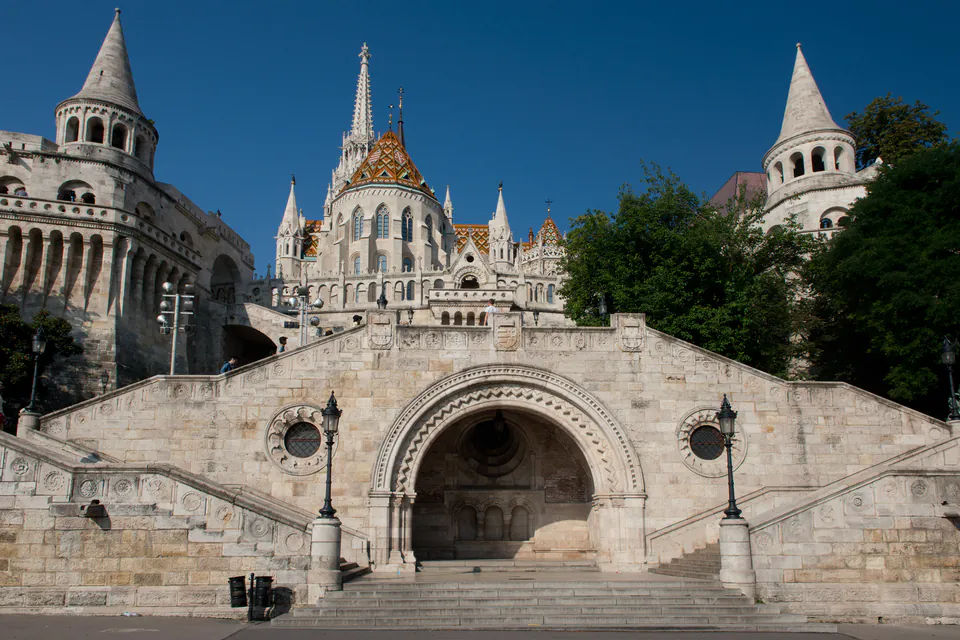
Seven Towers Tell a Story
The whole point of Fisherman's Bastion is in those seven towers. Each one stands for one of the seven Magyar chieftains who brought their tribes into the Carpathian Basin back in 896. These aren't just pretty decorations - they're monuments to the very beginning of Hungary as a nation. When you look at them, you're connecting with the deepest roots of this ancient land.
We found that each tower gives you a different view of Budapest's massive panorama. The middle towers have those classic postcard views across the Danube to Parliament. The outer towers frame different angles of the city's architectural treasures. Those conical roofs and neo-Romanesque details create that unmistakable fairy tale look that makes Fisherman's Bastion instantly recognizable from anywhere in Budapest.
The design is pretty clever - it balances historical meaning with practical use. While the towers look like medieval castle architecture, they're perfectly positioned as viewing platforms. The arched openings frame the cityscape like living paintings. The white limestone makes sure the bastion gleams against Budapest's often grey skies, creating a beacon you can see from across the city.

Budapest's Best View
From Fisherman's Bastion, Budapest turns into this living masterpiece spread out below you. The view has everything that makes this city amazing - the winding Danube separating Buda from Pest, Parliament's Gothic spires dominating the other shore, and Margaret Island's gentle curves creating a green spot in the river.
The Hungarian Parliament Building takes over the eastern horizon, its detailed facade catching light all day long. To the south, you get the elegant spans of Chain Bridge and Margaret Bridge connecting both sides of the city. St. Stephen's Basilica's massive dome anchors the Pest skyline. On clear days, you can spot the Hungarian Academy of Sciences, the beautiful Art Nouveau details of Gresham Palace, and tons of other architectural gems that make Budapest special.
The magic changes with the light. We always recommend morning visits to see the city waking up in golden colors. Sunset turns the Danube into molten gold. Evening might be the most spectacular show, when Budapest's lit-up landmarks create this glittering tapestry across the darkness. We've been back multiple times to experience these different moods, and each one shows new details in the urban landscape below.
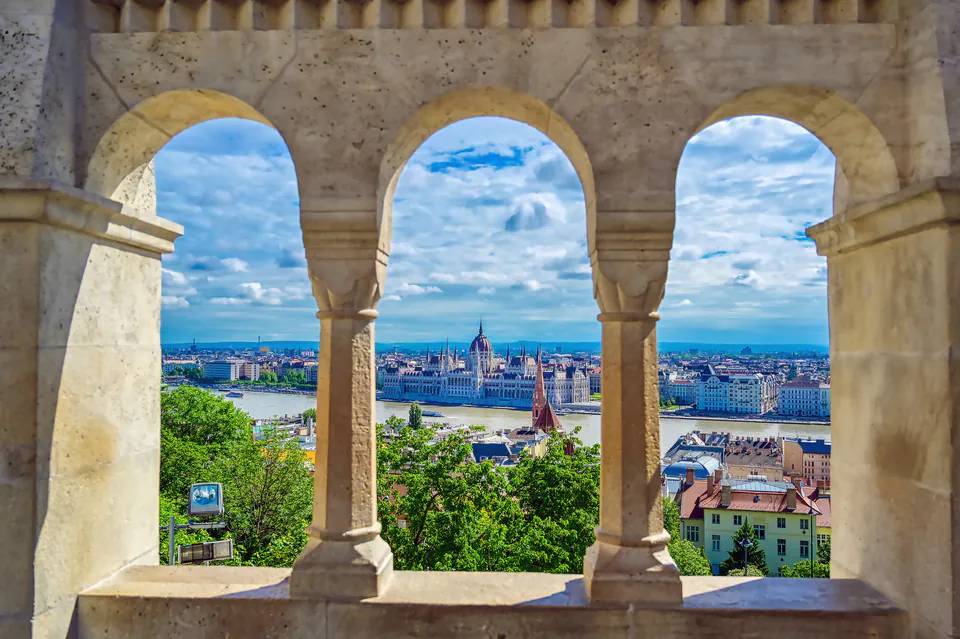
Fantasy Architecture That Actually Works
Fisherman's Bastion shows neo-Romanesque architecture at its most romantic. Schulek took inspiration from early medieval Romanesque styles but filtered them through 19th-century ideas. The result is architecture that feels both historically real and fantastical. It seems like it belongs in a storybook but works perfectly for modern practical purposes.
The bastion's design has multiple levels connected by fancy staircases, with arched galleries, decorative walls, and detailed stone carvings everywhere. The central courtyard has this majestic equestrian statue of King Stephen I, Hungary's first Christian king, created by sculptor Alajos Strobl. This bronze monument, unveiled in 1906, faces Matthias Church and gives the whole complex a focal point.
Beyond those famous towers, the bastion has tons of architectural treasures. Fancy relief panels and medallions showing scenes from Hungarian history decorate the ceremonial stairs. Statues of 10th-century warriors stand guard under arches, while detailed stone carvings show off the era's exceptional craftsmanship. Every element adds to the overall feeling of stepping into a romanticized vision of medieval Hungary.
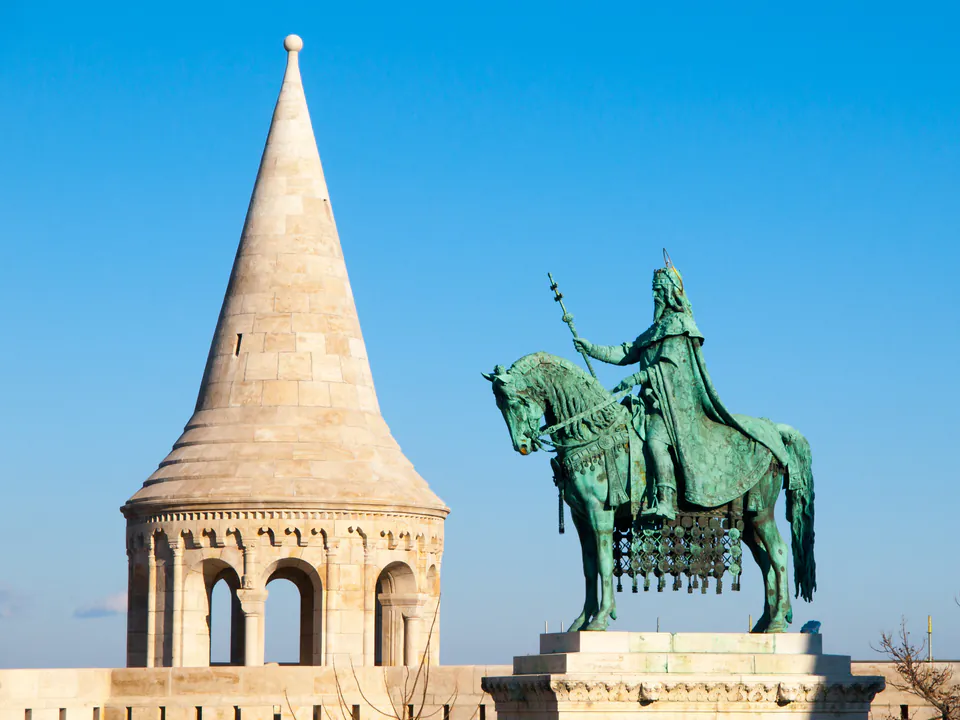
Hidden Medieval Secrets
Underneath Fisherman's Bastion is one of Budapest's coolest secrets - the medieval St. Michael Chapel. This two-nave sanctuary with its octagonal chancel goes back to the 15th century, when it was a cemetery chapel near the original Church of Our Lady. For over 250 years, this architectural gem was buried and forgotten, until Schulek's excavations accidentally found it again in 1899.
Finding the chapel forced Schulek to change his original plans, which shows his commitment to preserving real historical elements within his romantic creation. The space has a cannon slot with views to the north, reminding you of its position within the castle's medieval defense system. After careful restoration, the chapel opened to the public in 1997, giving visitors a real connection to Castle Hill's medieval past.
This underground sanctuary perfectly shows the layered history that makes Fisherman's Bastion so compelling. While the visible structure celebrates 19th-century romantic nationalism, the hidden chapel connects visitors to the genuine medieval world that once flourished on this hilltop. We discovered that the mix of authentic antiquity with romantic revival creates a uniquely rich historical experience.
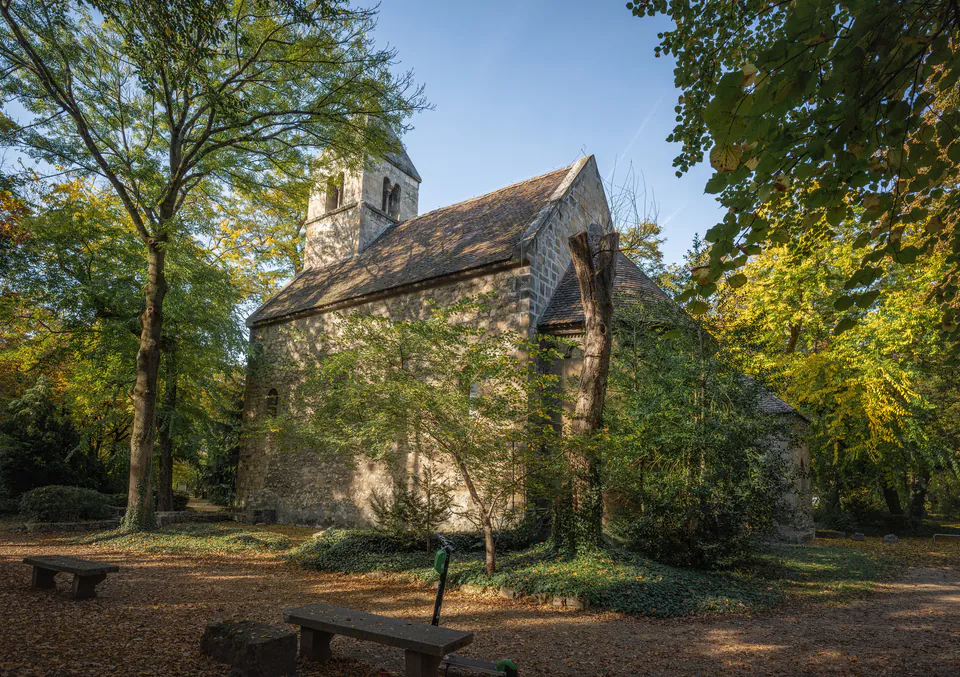
Planning Your Visit
Fisherman's Bastion is open year-round, with different areas giving you different levels of access. The lower terraces and connecting walkways are free and accessible 24 hours daily, so budget travelers can enjoy the basic experience without paying anything. But the upper towers and premium viewing platforms need tickets during peak hours, when you get the most spectacular panoramic views.
The ticketing system works seasonally, with longer hours during summer months when daylight lasts longer and more tourists show up. From June through September, you need tickets from 9:00 AM to 9:00 PM. The winter season (October through May) has ticketed hours from 9:00 AM to 7:00 PM. Outside these hours, even the upper levels become free, making early morning or late evening visits really attractive for budget travelers and photography fans.
Current adult admission to the upper towers costs 1,500 Hungarian forints (about €4), with big discounts for students, children aged 6-14, and EU senior citizens, who pay just 750 forints. Kids under 6 get in free, as do disabled visitors with proper ID and their carers. The ticket office only takes card payments, so bring plastic instead of cash.
Fisherman's Bastion Admission Prices
| Visitor Category | Price (HUF) | Requirements |
|---|---|---|
| Adults | 1,500 | Standard admission |
| Students | 750 | Valid student ID required |
| Children (6-14) | 750 | ID verification needed |
| EU Seniors | 750 | EU citizenship proof required |
| Children (Under 6) | Free | Age verification may be requested |
| Disabled + Carer | Free | Appropriate documentation required |
Getting There
Getting to Fisherman's Bastion means going up Castle Hill, but several transportation options make the journey doable for visitors of all mobility levels. The most convenient way uses public transportation to reach the Buda Castle District, with bus routes 16 and 16A giving direct service to stops within walking distance of the bastion.
The romantic option is taking the historic Castle Hill Funicular from Clark Ádám Square near the Chain Bridge. This charming cable car system, dating back to 1870, carries passengers up the steep hillside in vintage carriages. We found that the upper station requires a 10-15 minute walk to reach Fisherman's Bastion. The funicular runs daily and gives spectacular views during the ride up.
If you prefer active exploration, well-marked walking paths and staircases lead up Castle Hill from multiple directions. The most popular route starts near the Chain Bridge and follows historic pathways through the castle grounds. While moderately challenging, these walks reward visitors with changing perspectives of the city and glimpses of Castle Hill's varied architecture along the way.

Best Times to See the Magic
Fisherman's Bastion shows different personalities throughout the day and seasons, each giving unique advantages for visitors. Early morning visits, especially around sunrise, give the most peaceful experience with minimal crowds and spectacular golden light illuminating the city below. The upper levels stay free before 9:00 AM, making dawn visits doubly attractive for budget travelers and photography enthusiasts.
Evening visits are equally compelling, especially during sunset when the Danube turns into a ribbon of gold and the city's landmarks glow with warm light. After ticketed hours end, you can access all areas for free while enjoying Budapest's illuminated nighttime skyline. We discovered that the contrast between the bastion's white stone and the city's golden lights creates really dramatic photo opportunities.
Seasonal considerations add another layer to visit planning. Spring brings mild weather and blooming flowers throughout Castle Hill. Summer has the longest daylight hours but also the biggest crowds. Autumn gives stunning photographic light and fewer tourists, making it ideal for leisurely exploration. Winter visits can be magical when snow covers the bastion's towers, though weather conditions may limit comfort for extended outdoor viewing.
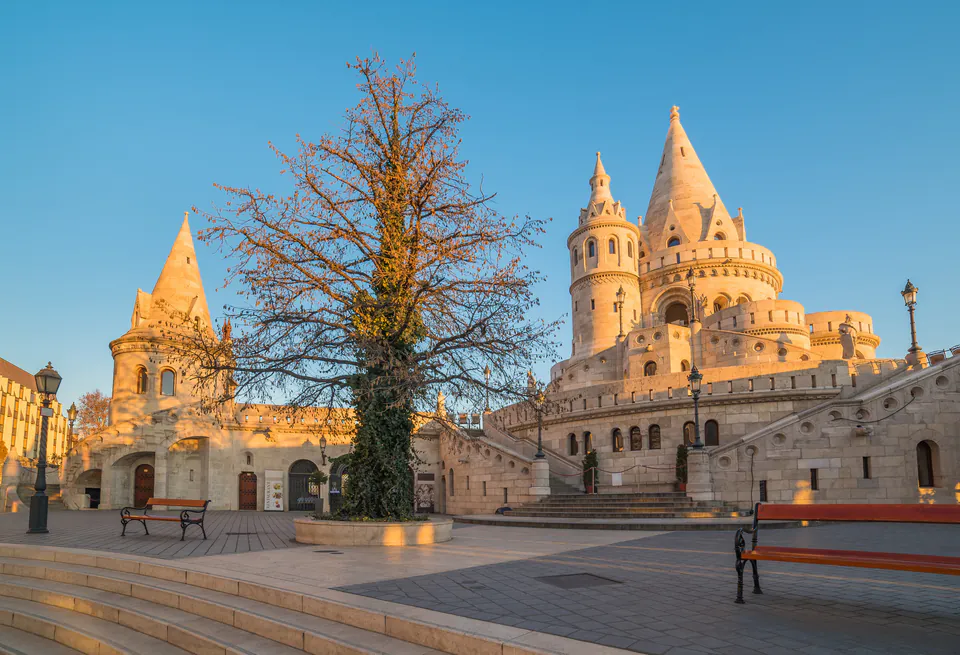
Photography Paradise
Fisherman's Bastion ranks among Europe's most photogenic landmarks, giving countless opportunities for memorable images. The classic shot frames the Hungarian Parliament through one of the neo-Romanesque arches, creating a perfect composition that captures both the bastion's architectural beauty and Budapest's urban grandeur. This perspective has been on countless postcards and social media feeds, but never loses its impact.
The seven towers are excellent subjects for architectural photography, especially when shot against dramatic sky conditions. Early morning and late afternoon light enhance the white limestone's texture and create compelling shadows that emphasize the structure's three-dimensional qualities. Wide-angle lenses capture the bastion's full scope, while telephoto lenses isolate individual towers against the cityscape beyond.
Portrait photographers find endless inspiration in the bastion's romantic setting. The arched galleries create natural frames for subjects, while the panoramic backdrop adds context and grandeur to personal photos. We learned that the contrast between the bastion's white stone and visitors' colorful clothing creates visually striking compositions that work well for both professional and casual photography.
Cultural Meaning and Symbolism
Fisherman's Bastion shows Hungary's complex relationship with its own history and identity. Built during the Austro-Hungarian Empire's final decades, it represents Hungarian nationalism expressed through architecture, celebrating the nation's founding myths while serving the practical needs of a modern European capital. The seven towers' symbolism connects contemporary Budapest to the legendary seven chieftains, bridging over a millennium of Hungarian history.
The bastion's construction happened at the same time as Hungary's millennial celebrations, making it part of a broader cultural project that included building Heroes' Square and expanding the Hungarian Parliament building. These monuments collectively expressed Hungarian national identity during a period of political complexity within the dual monarchy, using architecture to assert cultural distinctiveness and historical continuity.
During World War II, the bastion took significant damage during the siege of Budapest, highlighting its symbolic importance to both defenders and attackers. Post-war restoration efforts, led first by László Bors and later by János Schulek (the original architect's son), showed the structure's enduring significance to Budapest's identity and the Hungarian people's commitment to preserving their architectural heritage.